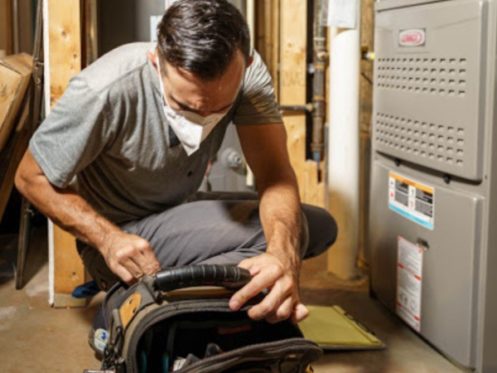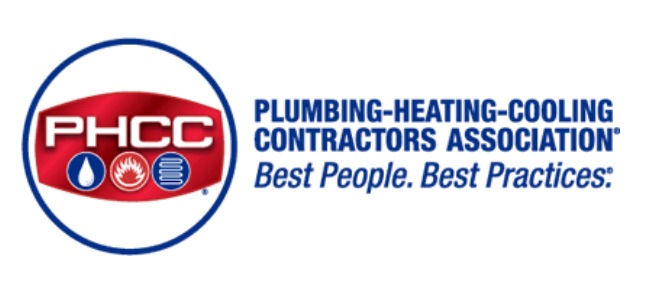Knowing how long your furnace will last can help you plan for replacement costs in the future. It’s also essential to learn how to maximize your HVAC system’s efficiency and lifespan. Taking care of your furnace can keep your monthly costs down and ensure your home is comfortable during the winter. No one wants to be left sitting in a cold home because they neglected to take care of their furnace. The failure to maintain your furnace will shorten its expected life. Here’s everything you need to know about your standard furnace’s lifespan.
Average Lifespan
A high-quality furnace can last anywhere from 10 to 30 years. On average, most furnaces last until about 20 years with proper maintenance and home care. Residential gas furnaces only last about 15 years. They have the shortest projected lifespans but tend to heat the home faster than other HVAC systems. Electric and oil furnaces more commonly last until 30 years, with oil furnaces typically lasting a little longer. Electric furnaces cost more to run than gas furnaces while oil is an uncommon fuel source. Factoring in an HVAC system’s expected lifespan can help you make the best home comfort decision for your household.
Major Influences on Lifespan
While your HVAC system’s fuel source plays a huge role in its lifespan, other factors can also impact the furnace’s usefulness in your home. By keeping track of your HVAC system’s needs, you can protect it against wear and tear and premature damage. A well-maintained furnace can safely heat your home for many years longer than intended.
Routine Maintenance
HVAC systems need professional maintenance at least once a year. If you don’t maintain your system, it is likely to need an early replacement. By calling in a qualified technician, you ensure your furnace is running at maximum efficiency. An industry expert will check for damages, corrosion, and more. They’ll also tighten any loose bolts or components and reapply oil to vital parts. A technician has the training to be able to spot and correct damages before they worsen and spread.
The average homeowner doesn’t have the training or the equipment to check for internal furnace issues. Your local technician knows how to diagnose common furnace issues and prevent serious wear and tear. Regular maintenance also has benefits like lowering your energy bills and repair costs.
Home Care
Your own furnace care is just as important as professional maintenance and repairs. Monitor your HVAC system for any significant changes that may actually be early warning signs. Regularly change out your filters to maximize airflow into the system. Leaving an old, clogged filter in place for too long has a direct impact on the furnace’s efficiency and lifespan. You should also regularly wipe down and clean your HVAC system. This allows you to remove dirt buildup and check for surface-level rust, cracks and other issues.
Ductwork Integrity
Your furnace needs your ductwork to transport warmth efficiently throughout your home. If your ductwork is improperly sealed, your HVAC system will work harder to compensate for the lost air. The harder it works, the faster it may need to be replaced. Tears and holes also create the perfect breeding ground for dust and debris. Humidity issues, pest infestations and indoor air quality problems can all start from sections of compromised ductwork.
Accumulated dust in your ducts will make its way between the delicate parts of your furnace. This issue increases your need for repairs and replacements. Dust buildup can also lower your home’s temperature control and drastically impact your furnace’s efficiency.
Thermostat Settings
Residential furnaces often don’t have the power to keep your home at a very high or low temperature. Attempting to set your temperature at 80 or above during the winter will likely put too much strain on your system and shorten its lifespan. Excessive strain wears down the furnace’s essential components, like the heat exchanger. This part is responsible for keeping natural gas out of your air supply.
It’s a better idea to keep your temperature comfortable but not extreme. Lowering your settings a few degrees will ease the strain on your furnace and lower your energy bills.
Correct Sizing
Ensuring your furnace is the right size for your home is one of your most important home comfort choices. Your home needs an HVAC system that’s properly sized for your square footage and ductwork. A system that’s too big won’t take long to warm your home. This can cause your furnace to short cycle, leading to rapid wear and tear and loss of home comfort.
Larger units also come with bigger bills, meaning you’ll end up paying more than necessary. A too-small furnace will wear out prematurely due to the strain of keeping a large home warm. Working with a trained professional will ensure your home is outfitted with the correct furnace. HVAC companies also carry the very best models, ensuring your system will be able to keep up with your home’s comfort needs for a very long time.
Home Placement
Where you install your furnace may impact its overall lifespan. These systems are often placed in the basement where humidity issues are common. A damp environment can quickly cause rust and corrosion. If this type of damage compromises your heat exchanger, your may need to replace your whole furnace. Moisture-heavy areas of the home can be treated with dehumidifiers to protect your furnace and valuable belongings.
Signs to Replace Furnace
Start considering replacing your furnace once it reaches about 15 years old. You may notice an increase in how much you’re spending on maintenance and repair needs. Older systems require more professional help to keep running. No matter how often you schedule service, you’ll still see a significant drop in efficiency. Your utility bills may steadily incline as your furnace becomes more unreliable. Your unit can also be noisier than before and have a harder time maintaining a set temperature throughout the home. You should always be mindful of strange smells or flame colors that may indicate something’s off with the gas supply.
Your system will eventually reach a point where it’s less expensive to just replace it. Installing a new system will immediately lower your service and utility costs. You also won’t have to worry about your system breaking down suddenly in the middle of winter. Calling for regular HVAC service will ensure your home is as safe and comfortable as possible.
Sterling Heating and Cooling Company
Meade’s Heating and Air is the HVAC company you should call in Sterling, VA and the surrounding areas. Our highly trained technicians have years of experience handling every HVAC system make and model. Trust Meade’s Heating and Air to inspect, maintain and repair your furnace and air conditioner. We’re also ready to handle new system installations and replacements. Our technicians are trained to provide indoor air quality services, ductwork sealings and gas line care. We can even help you find the right HVAC filters for your family’s health and comfort needs. Rely on us for scheduled service as well as 24/7 emergency repairs. Call Meade’s Heating and Air today to learn more about our special HVAC offers in Sterling.




